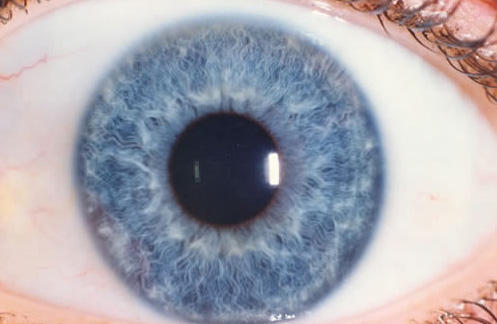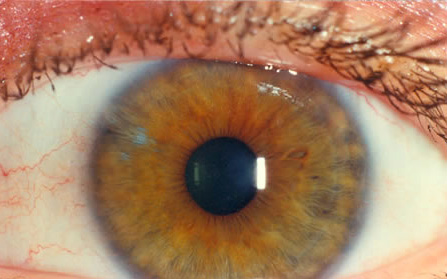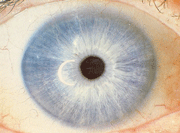How many iridology constitutional types?
There are 3 main Iris colour types, namely Brown, Blue and Grey. There is also an exception to these basic types known as a Biliary or Mixed Constitution, namely part blue and part brown. This type display a combination of factors that are found in both the blue and the brown eyed types.
Where the iris pigmentation is slight, the iris appears blue as is commonly found in the northern European type, where less pigmentation is required for protection against intense sunlight. On the other hand, with an increase in pigmentation, the colour becomes more grey and proceeds to brown and on to dark brown, as is found in the Mediterranean, Middle Eastern, African and Indian types. Over the generations, interbreeding has, in some instances produced a mixed genotype known as a Biliary Constitution, where the person inherits the strengths and weaknesses of both the brown and blue eyed constitutions.
We are therefore left with 3 distinct groupings:
the blue eyed constitution known as the Lymphatic Type;
the pure brown eyed constitution known as the Haematogenic Type;
and the combination of the two being the Mixed or Biliary Type.
The Lymphatic Constitutional Type

The blue iris is characteristic of the lymphatic constitution. It is associated with conditions caused by excess production of catarrh and the resulting congestion of the lymphatic system that may inhibit immune function and elimination of toxins.
- Constitution – Lymphatic
- Type – Pure Lymphatic
- Iris Colour – Blue
- Description – Loose wavy fibres, like combed hair in a blue or grey iris.
- Inherent Tendencies – Re-activity of the lymphatic system (adenoid and tonsil irritations; splenitis; swollen lymph nodes; irritated appendix; catarrh with exudations; eczema; acne; flakey, dry skin; dandruff; asthma;coughs; bronchitis; sinusitis; diarrhoea; arthritis; vaginal discharge; eye irritations; fluid retention).
The Biliary Constitutional Type

The mixed or biliary constitution, whilst being prone to disturbances exhibited by both the Lymphatic and Haematogenic Types is, in the main, more prone to liver, gall bladder and pancreatic disturbances, flatulence, constipation, diabetes and blood diseases.
- Constitution – Biliary
- Iris Colour – Basic Blue background with a brown overlay. The iris often appears light brown to greenish brown; sometimes described as the hazel eye. bbn
- Description – In many cases the iris appears uniformly brown and is therefore often confused with the Haemetogenic Constitution. Deeper observation however reveals that only the upper, cryptic leaf shows brown pigmentation with the lower leaf showing through as bluey-green. Usually, however, the iris will show clear areas of blue and contrasting brown areas. Contraction rings are often in evidence as is the darkened central area (central heterochromia). Sometimes sectorial heterochromia is evident. Occasionally, lymphatic tophi of various hues are also present.
- Inherent Tendencies – Flatulence; constipation; colitis; hypoglycaemia; Diabetes; blood diseases; gall-stones; liver, gall-bladder, bile duct and pancreatic disorders; gastro-intestinal weakness with spasm; Haematogenic and Lymphatic Constitutional strengths and weaknesses.
Iris Constitution according to Joseph Deck
(several sub-classifications of constitutions are not listed)
Lymphatic

Lymphatic is the blue eye due to lack of melanin pigment. This type of constitution have tendency toward excess mucous production with discharges focusing in the respiratory, alimentary, and urogenital tracts. Often found in these types are overactive immune system and allergies, over acidity, and lymphatic congestion with a tendency towards arthritic, rheumatic, ezcematic, and psoriatic conditions.
Billiary/Mixed Brown

Seen as a light brown pigment with overlaying visible white/yellowish fibers. Tendency often associated with liver, gallbladder, and associated digestive disturbances often aggravated by dietary disorders.
Hematogenic/True Brown

Seen as a brown pigment “carpet” obscuring iris and fibers. Tendency often associated with blood composition, liver, gastrointestinal, and glandular disturbances.
Neurogenic Sensitive or Neurolymphatic Constitution

BROWN EYES
Brown eyes, also known as hematogenic, usually have a brown pigment “carpet” covering the iris fibre structure.
Brown-eyed people with this true hematogenic constitution almost always have dark skin and hair.
The pigment layer over the iris make them harder to read but primary areas of concern are blood composition, liver, gastrointestinal and glandular problems.
They’re susceptible to venous congestion, imbalances in blood composition, trace minerals deficiencies, intolerance to dairy, liver problems and decreased white blood cells.
Naturopath Cassie Mendoza-Jones of Elevate Vitality says iridology is effective for surveying an individual’s general health.
“You can’t diagnose a condition using it because it’s not like having a blood test or a scan but it’s really effective in helping to see where there might be imbalances and where you can improve parts of your health,” she said.
“It can help identity your constitution and predispositions to different diseases.
“It can definitely show certain disturbances in the body whether it’s functional, structural or even emotional.”
Ms Mendoza-Jones said that while she doesn’t practise iridology at her Bondi-based clinic, she respects the approach.
The 27-year-old, who specialises in integrative nutritional medicine, said the results of iridology are “pretty amazing”.
“When I had it done on me it did help,” she said.
“I’ve got black spots around my eyes and apparently that relates to liver issues. I’ve got brown eyes and around the very outer edge of the irises there is another darker ring.
“She said I had some liver issues and a magnesium deficiency, but I think most people are (magnesium-deficient). She said I had bad circulation, which is true. She also said that I can feel a bit anxious or nervous … and I can get nervous and worry.”
MIXED-EYE
Those with a mixed eye colour are said to have a biliary constitution, which relates to biliousness (digestive disturbances) due to liver problems.
The eyes usually look light to greenish-brown (sometimes described as the hazel), with the iris fibres visible through the pigment, on a whitish-yellowish background.
These eyes are composed of materials from the blood stream which have been broken down due to liver imbalance.
Colour is usually concentrated towards the centre of the iris around the collarette and digestive zones.
The main problems for mixed-eye people are digestive, hepatic and intestinal.
These people are predisposed to liver, gallbladder, and associated digestive disturbances which can be aggravated by dietary disorders.
Dr Leach said there’s still a lot of debate about the evidence.
“The feedback from patients is that it’s fantastic and there seems to be a little bit of plausibility there but in terms of the actual evidence … there’s a question of validity there. I just don’t think it’s been tested effectively,” he said.
“One the one hand you’ve got people who are very supportive of it and say the approach has a strong tradition and history that support it. On the other hand you’ve got scientists who say there’s no evidence that it actually works.
Constitutional Types in Iridology

Strong Constitution
Constitution is important because it gives an indication of the overall strength of the body. People with a very strong constitution often grow up abusing themselves physically because they find they can get away with it and suffer no ill consequences. They don’t think about their health very much because they aren’t forced to do so by feeling badly. When they do become ill, they usually have little patience with their problem and they tend to recover rapidly. Sometimes they are not always too considerate of the health problems of others with weaker constitutions who perhaps are ill more frequently or take longer to recover.

Medium Constitution
Constitution is important because it gives an indication of the overall strength of the body. Persons with medium constitutions have a greater amount and degree of inherent weakness in their body. Generally speaking, they need to care for themselves more than others do with stronger constitutions in order to stay well. They find that they cannot abuse themselves and get away with it. They have to pay more attention to what they eat, perhaps what they wear, the climate in which they work and live, etc. Usually, the poorer the constitution, the more difficult it is to get well and stay well.
Persons with the medium constitutions are frequently more sensitive. They know what it is like to be ill and not to recover so quickly and thus tend to have a greater sympathy with others who are not well. They are often the people found in jobs where they care for the ill. Those with medium constitutions can be well and stay well. A person with a medium constitution just needs to take a little extra care.

Weak Constitution
Constitution is important because it gives an indication of the overall strength of the body. Persons with poorer constitutions have a greater amount and degree of inherent weakness in their body. Generally speaking, they need to care for themselves more than others do with stronger constitutions in order to stay well. They find that they cannot abuse themselves and get away with it. They have to pay more attention to what they eat, perhaps what they wear, the climate in which they work and live, etc.
Usually, the poorer the constitution, the more difficult it is to get well and stay well. Persons with the weaker constitutions are frequently more sensitive. They know what it is like to be ill and not to recover so quickly and thus tend to have a greater sympathy with others who are not well. They are often the people found in jobs where they care for the ill. Those with weaker constitutions can be well and stay well. A person with a weaker constitution just needs to take a little extra care.
Personality Typing
Normally personality is determined by the autonomic nerve wreath and how small or large the colon is. The smaller and tighter the autonomic nerve wreath is to the pupil, the more introvert and/or private the individual. The larger and more expended the autonomic nerve wreath becomes, the more extrovert and public the individual. Introverts tend to be analytical/thinking, extremist/innovators, and active/kinesthetic. They tend to have strong constitutions. They can be cleansed and can fast. Extroverts tend to be emotional/spontaneous and Polyglandular. They tend to have weak constitutions. They need to be built up before they can be cleansed or be on a fast.

Introvert

Extrovert

Introvert Become Extrovert
Carina is available to lecture for your group or institution on this subject.
Carina Harkin BHSc.Nat.BHSc.Hom.BHSc.Acu. is a practitioner of 11 years, complementary medicine lecturer of 4 years and mother of six in Galway, Ireland who practices what she teaches.























